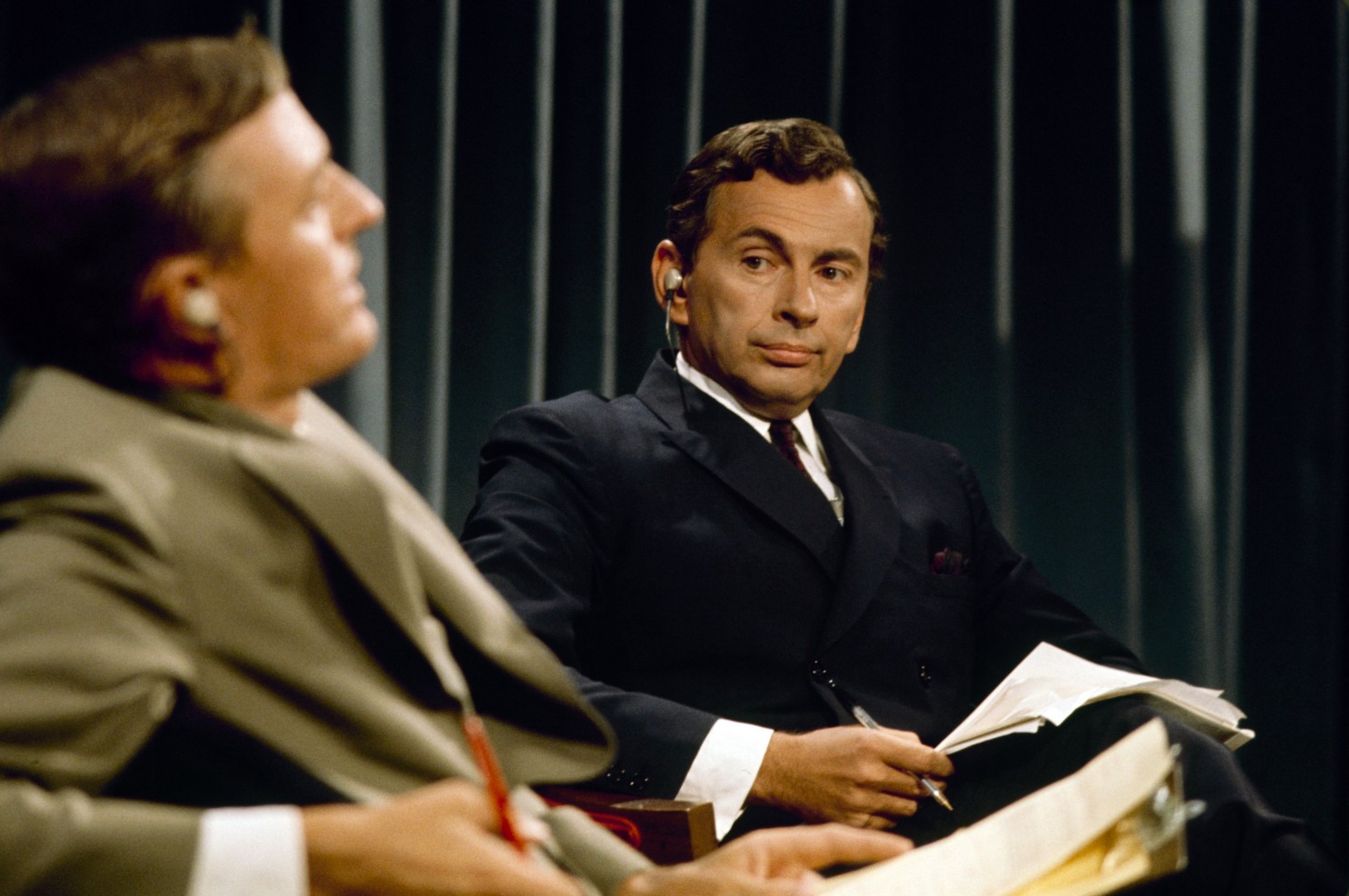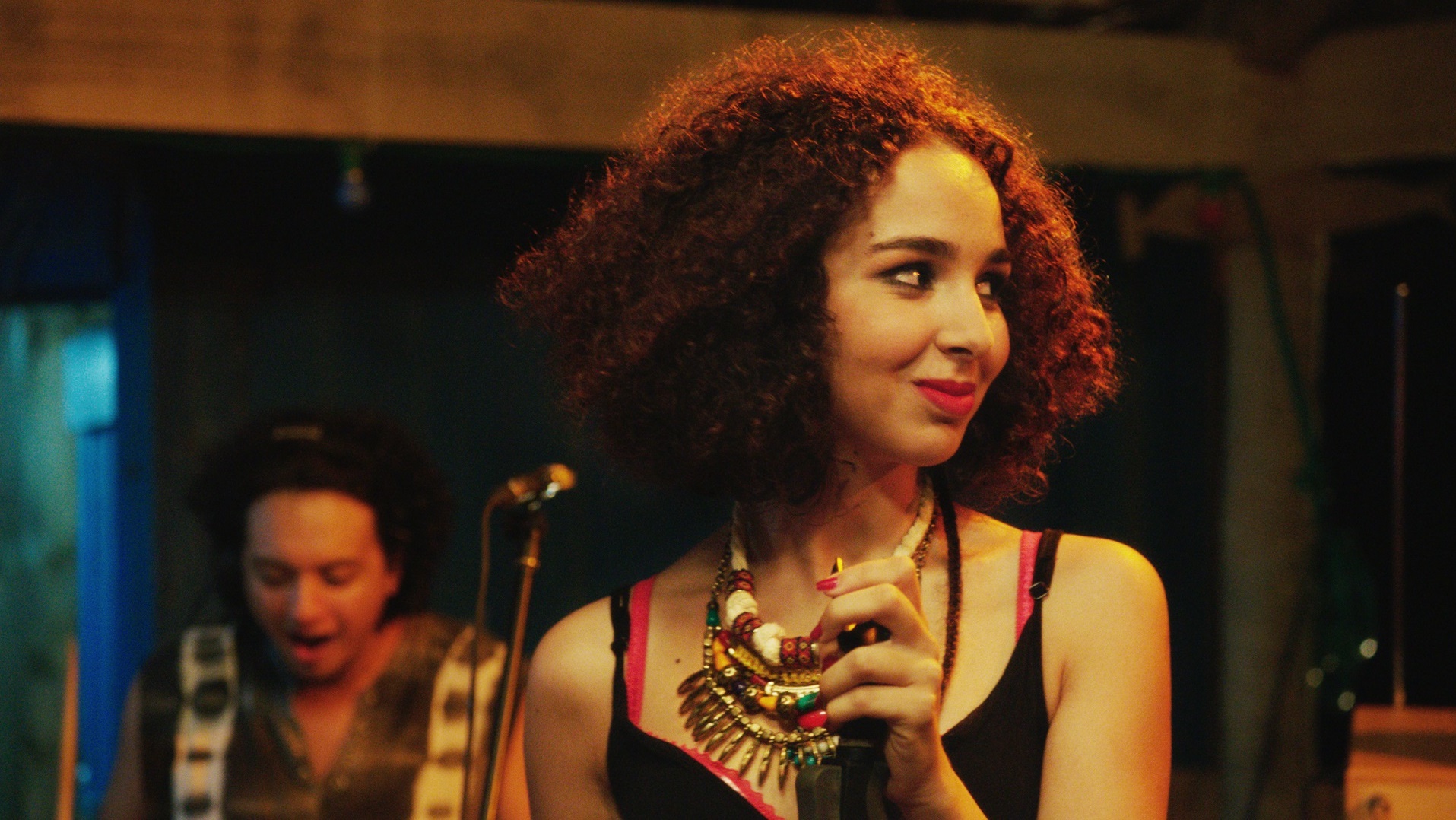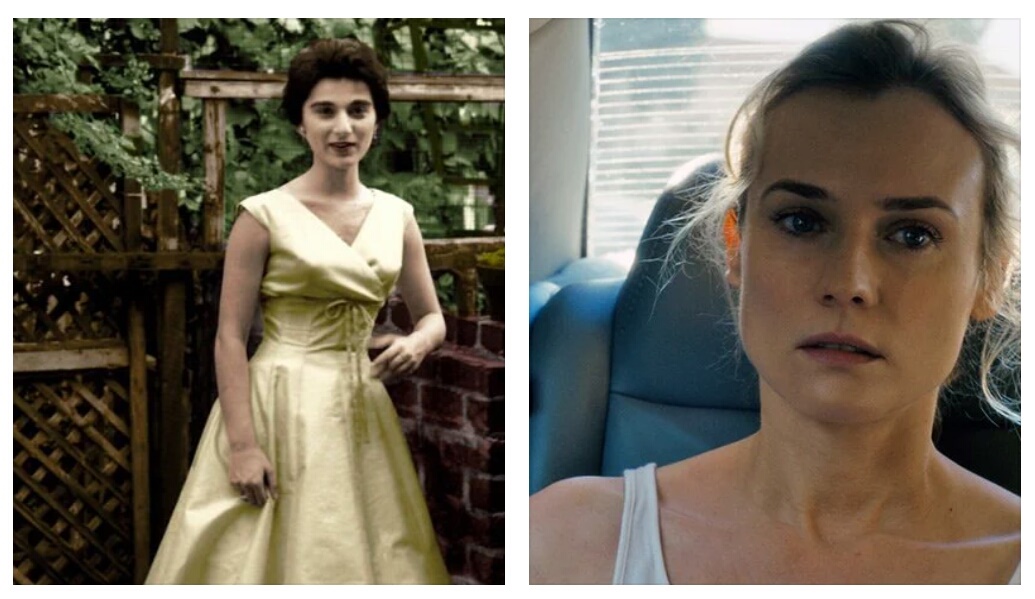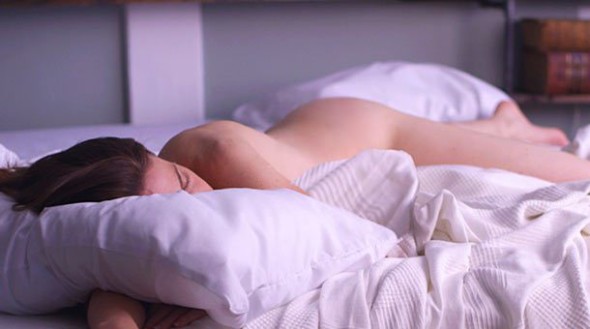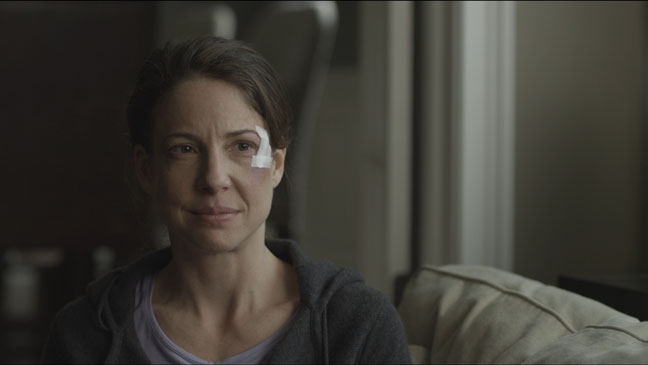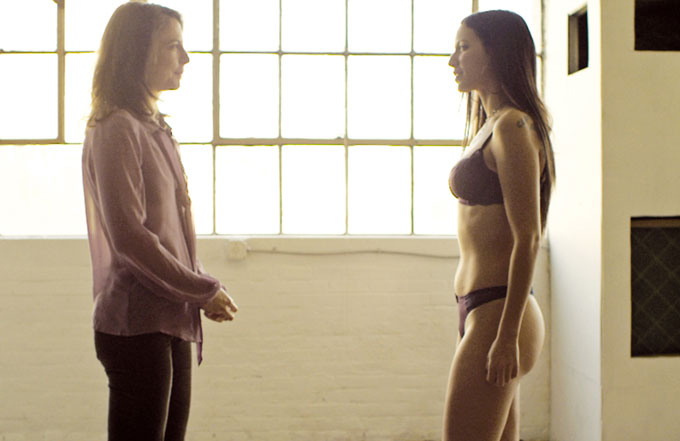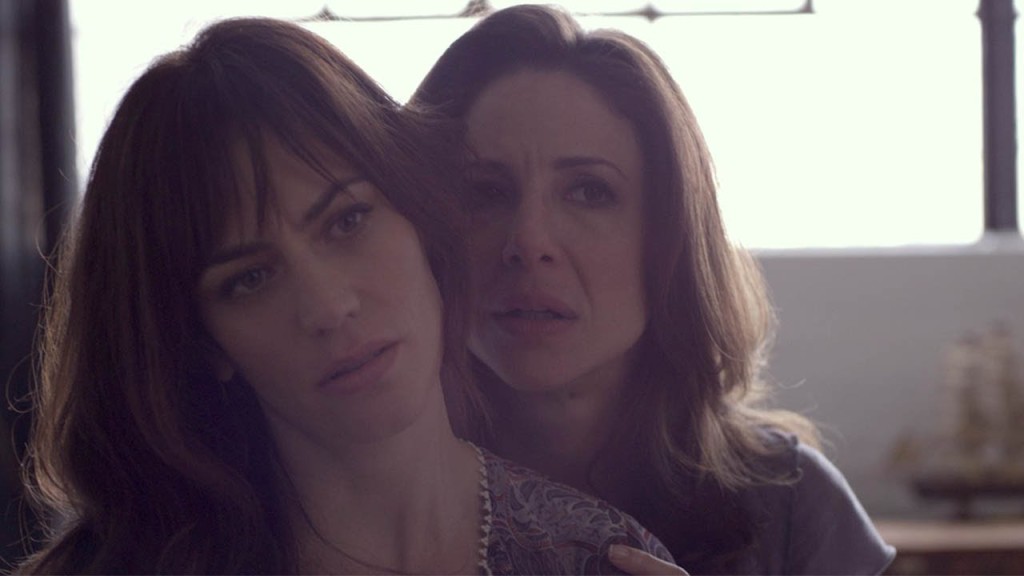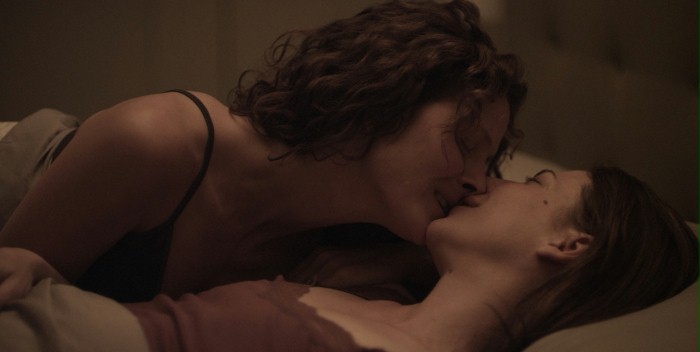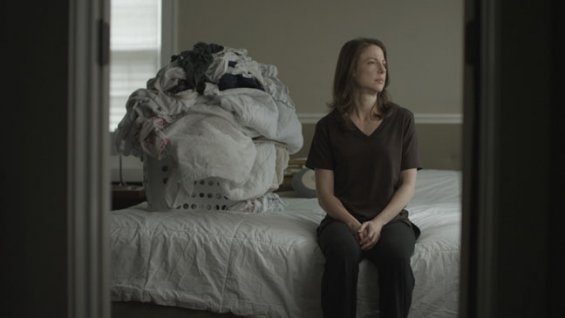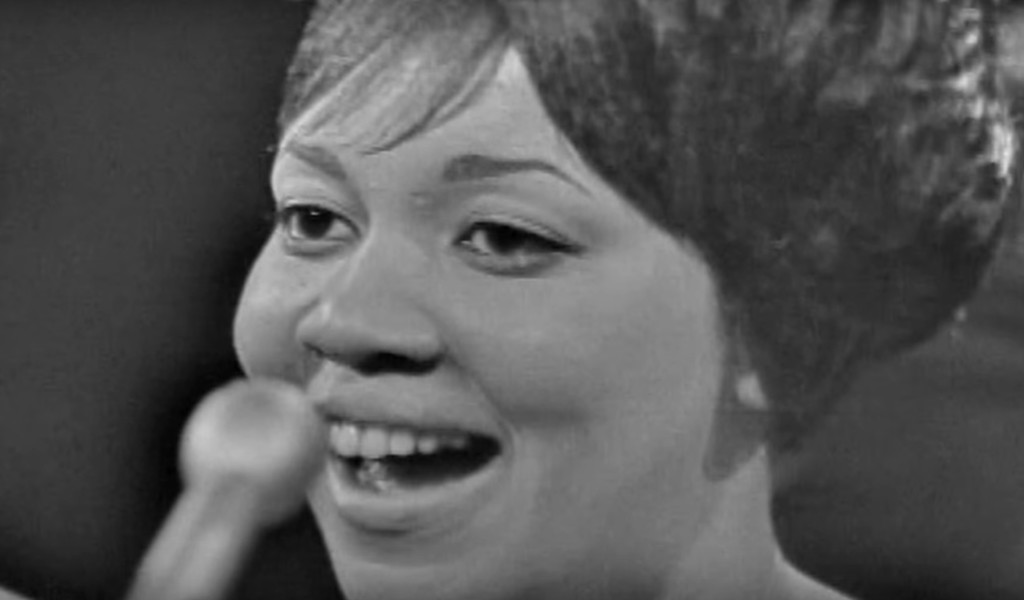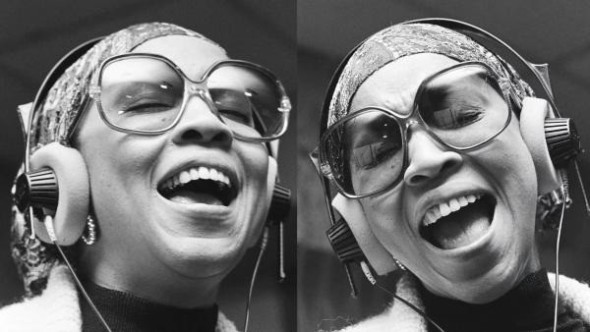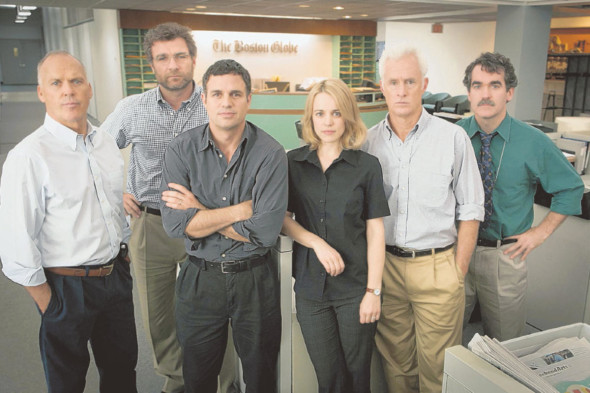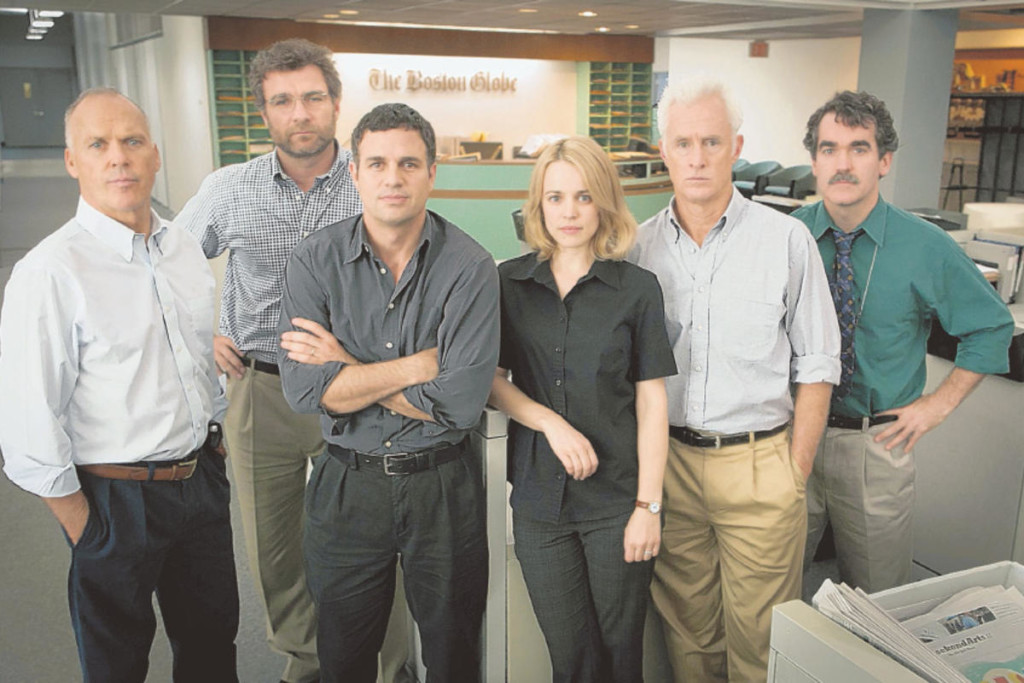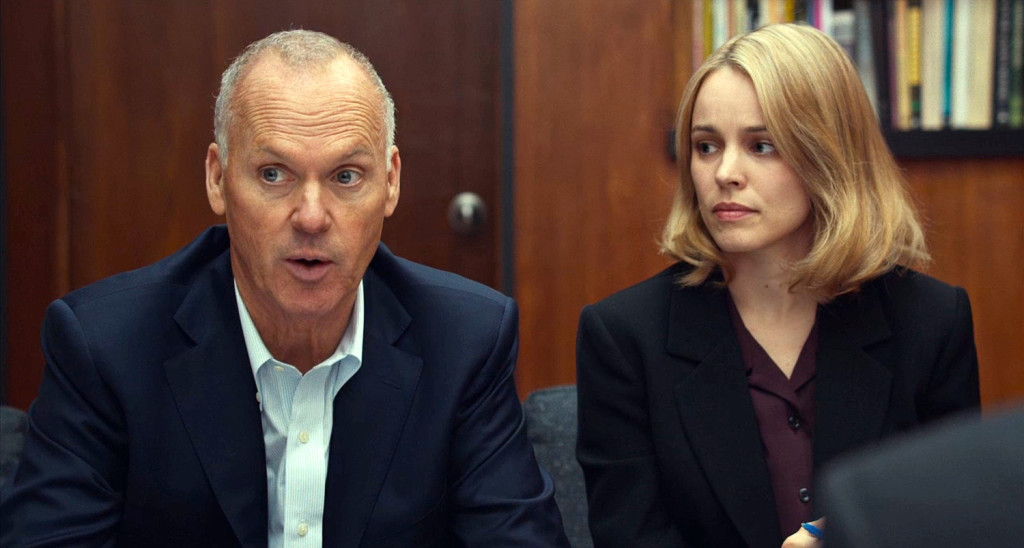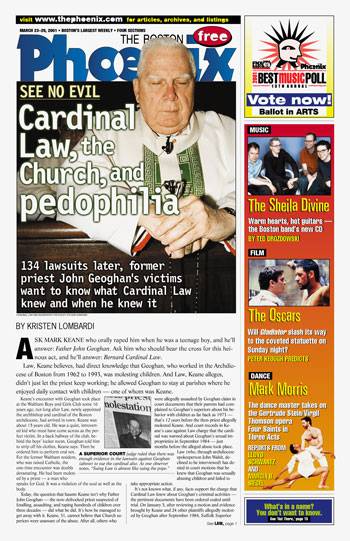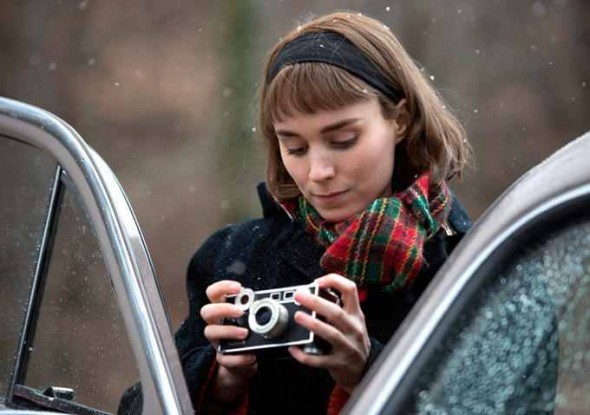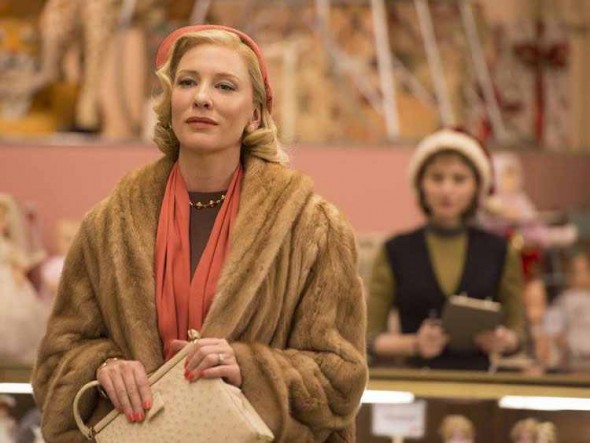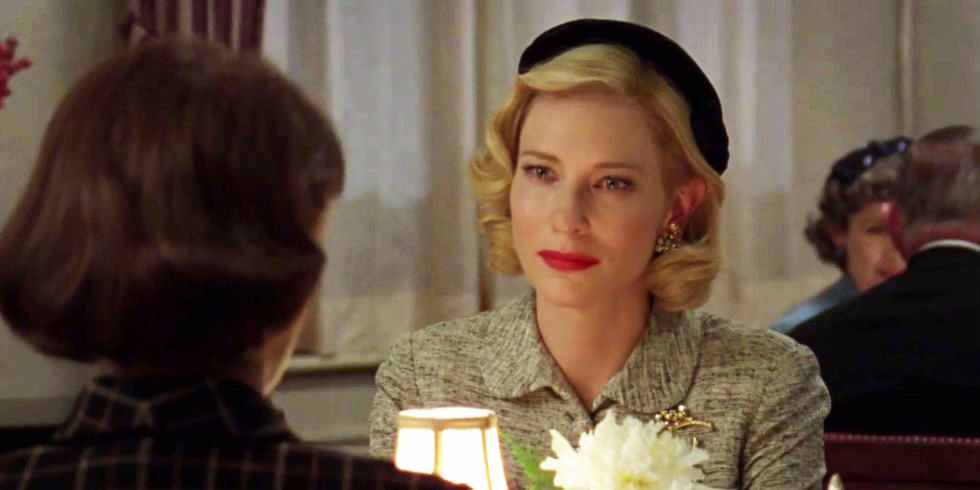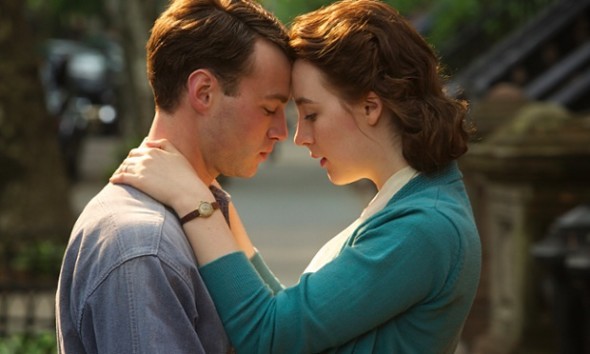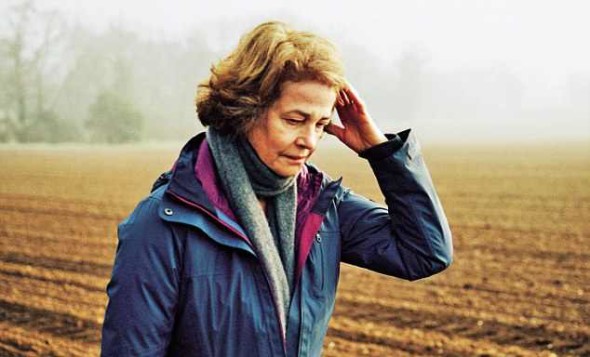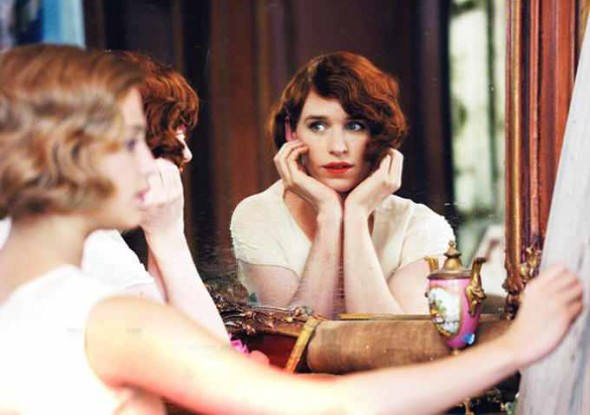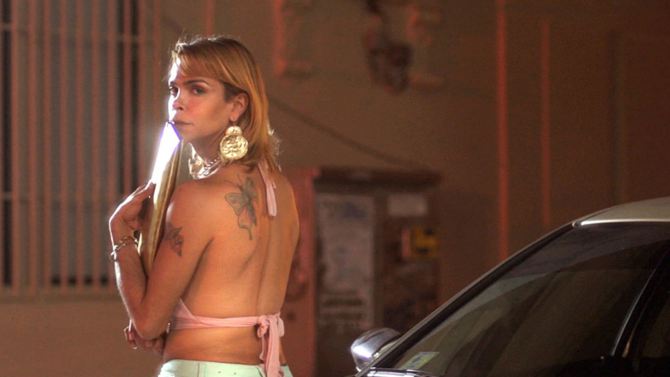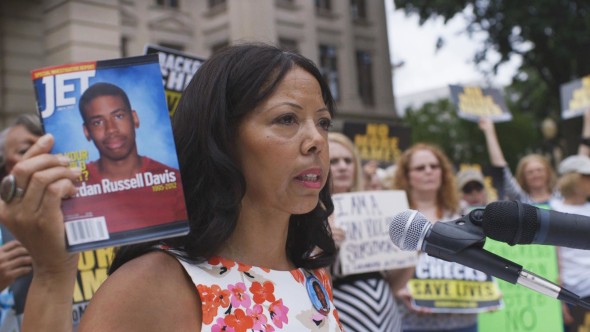
Written by Ren Jender.
“My uncool parents won’t let me be an artist (or writer)” is such a common plot for coming-of-age films that a repertory theater could show a different one every night and fill at least a full month’s calendar. But girls and women usually need not apply as leads in the Portrait of the Artist as a Young Man genre. In these films, the wife and/or girlfriend of the main character rarely has a personality of her own. The male protagonist has a meddling (or mostly silent) mother. We see sisters as troubled or as comic relief, like in writer-director David Chase’s Not Fade Away, a lackluster semi-autobiographical account of a not very successful band in the 1960s.
Two things that make Leyla Bouzid’s new film As I Open My Eyes distinct from these other films are: the lead who resists family pressure by joining a band is a young woman, Farah (Baya Medhaffar) and her parents have more to be concerned about than what the neighbors think. The action takes place in Tunis, Tunisia, in 2010, before the Revolution, so any kind of rebellion, even artistic, can draw the attention of the police and lead to arrest — or worse.
But Farah is a teenager (she’s 18), so she doesn’t believe she’ll get into trouble with the authorities. As her mother (Ghalia Benali) tries to dissuade her from performing with the band, which includes Farah’s slightly older, manbun-wearing boyfriend, Bohrène (Montassar Ayari), Farah says, “Everyone’s scared for nothing.”
Her mother sighs as she tells Farah, “I used to be like you.”
Like girls and young women all over the world, Farah blithely lies about why she’s late coming home which sends her mother into paroxysms of rage and frustration and leads her to vow to never speak to her daughter again. But the fractured family puts on a good front for their other relatives during Ramadan Iftar as they talk of Farah becoming a doctor and avoid any mention of her musical ambitions.

Bouzid, who is from Tunisia, (she now lives in France) co-wrote the script with Marie-Sophie Chambon and they capture the balancing act required of those who live under a police state. Even the band discusses which songs are (and aren’t) safe to play. When one member asks, “Aren’t we censoring ourselves,” we can see how younger people chafe against the restrictions that have defined their parents’ lives.
A great deal of the film takes place during the band’s performances and rehearsals, the songs commenting on the political situation of the country, similar to Cabaret‘s juxtaposition of musical performances and increasing oppression. But the music is North African with a tinge of punk: Farah’s style of singing sometimes reminds us of X-Ray Spex’s Poly Styrene and Farah and her bandmates pogo to one song. Farah’s great curly meringue of hair (like her mother, Farah looks like a different person with her hair pulled back) is offset by an early-’80s-style “tail.”
Medhaffar is fully committed as a singer, sometimes seeming to be nearly moved to tears by what she sings, but she shines offstage as well. Too often, a teen lead is played by an actor several years older, a glaring discrepancy at that age. Medhaffar, if anything, seems younger than 18, perfect for the stubborn, determined, and love-addled Farah. Bouzid and Medhaffar expertly capture the intoxication that is a young woman’s first love and first (good!) sexual experience. Benali is also excellent, so much so that I wished the script added more clarity to her backstory. As I Open My Eyes is the second film I’ve seen written and directed by a Tunisian woman about a Tunisian woman becoming an artist (the other is Satin Rouge), a genre I hope we see more of — and not just from Tunisia.
[youtube_sc url=”https://www.youtube.com/watch?v=kgx_48jQAmE”]
I had the opportunity to talk with Leyla Bouzid, the director and co-writer of As I Open My Eyes, by phone last month. This interview was edited for concision and clarity.
Bitch Flicks: Baya Medhaffar is not just a great singer but also so good in the scenes that show her emotional and physical attachment to her boyfriend. Were there films that feature a young woman’s first love — and sex — that you were influenced by? Were there mistakes you’d seen in other films that you wanted to avoid?
Leyla Bouzid: We wanted to show the emotion. It’s her first love. The kiss at the start of the film is the first kiss and the time they make love is the first time she makes love, even if she doesn’t say it’s her first time. She just says, “It’s the first time I’ve seen a guy naked.” I was always thinking what was important for her. Because in other films, especially films from the Arab world, the issue would be she’s not a virgin anymore. This is not the truth; it’s not the real feeling this young woman would have. And I wanted the film to be very organic and very tactile, that we feel what you feel when someone is touching you for the first time. What I thought about were Jane Campion’s films, like The Piano. When the lovers touch each other you can really feel it. It’s a feminine way of showing love and attraction.

BF: I liked that the mother character starts out as seeming completely unreasonable, but then as the film goes on we see that she’s not. I’m wondering if you gave the actress Ghalia Benali [who is also a singer] any special direction.
LB: Ghalia was very afraid that we would think her character is hysterical. We talked a lot about the mother’s path. At the beginning of the film, she’s protecting her daughter so much that we think, “She’s crazy.” But at another point of the film we think, “She was right.” I pushed her to become this very protective mother. She trusted me. She said that how she was in the first part of the film reminded her of her own mother when she first started singing.
BF: Although the music is North African it also, especially in Medhaffar’s singing had a punk feel. And Farah has one of Patti Smith’s ’70s album covers hanging in her bedroom. What bands did you want Farah’s band to sound like or be influenced by?
LB: In Tunisia, there is not that much of a rock scene. There was when I was really a teenager but not during the period in the film. But there are a lot of Western bands that make rock and punk in Lebanon and Egypt and I was influenced by them. A band called Adif: it’s the band of the composer of the film [Khyam Allami]. It’s really rock but melancholy. I was also influenced by the Lebanese group called Mashrou’ Leila and by Maryam Saleh and Tamer Abu Ghazaleh. The idea was to have this mixture of traditional rock and traditional Tunisian music.
BF: The film takes place before the Revolution in 2010. Six years later, what do you think Farah would be up to? Do you think she would do as you did [Bouzid, like Deniz Gamze Ergüven, writer-director of Mustang attended the French film school La Fémis] and leave Tunisia?
LB: I think she’s still in Tunisia. She’s probably able to sing and has an audience and more of an ability to do concerts, but if she stays she’s probably disappointed — or depressed. When I was searching for the actress to play Farah, I met a lot of young women that were 22, 23 years old [which would be about Farah’s age now] and they were all kind of depressed. When I told them the story of Farah, they said, “Oh this is the story of my life, but I gave up and now I’m stuck with my family.” When watching the film, we can decide what happens. At the end it’s open, if she continues to sing or not.
BF: Your father is an acclaimed Tunisian director. Did you learn anything from him?
LB: The most useful thing I learned from him is: it is really hard in our country to make a film. In Tunisia making a first feature before turning 30 is unusual but part of why I could do it is because I had seen my father, how difficult it was every time for him to make a new film. Even though he was so famous in Tunisia it was still hard for him to get financing. I think when you start in cinema, it’s a dream and people idealize it. I didn’t. I knew it was really complicated.
BF: Muslims in France have been in the news lately. Your home is in France. Do the bans on Muslim women dressing how they want concern you?
LB: Yeah, I think really it’s just an empty, I don’t know how to say, a non-event. What the hell do you care about the clothes women wear when they swim? I’m relieved that the French courts stopped this. Politically, it was a very, very, very bad sign.
BF: Surveillance from the state, especially in the form of surrogates, like the “friend” of the band, is a big part of the film. Did you have experiences with state surveillance when you were in Tunisia? Did you know anybody who did? In the U.S., Muslims have been very much targeted in surveillance. Is the same thing happening in France?
LB: Yes, in Tunisia this event in the film, it really happened to me, but not in the same situation. When I was 16 and 17 years old, I was in a cinema club. We were all young. Some were 22 and I was the youngest I think. And we met every Saturday and talked about cinema and started to make our films. There was a guy who was the only one who had his own apartment, so we were always having parties at his house. If we were doing something we had to hide or we wanted to make out or whatever, we always went to his house. And after 3 years, I found out that he was a cop and that he was there to watch us. This is something that happened to a lot of people. Also, all the taxi drivers, they were working for the police, so every seventh person in Tunisia was a cop.
In France, let’s say the atmosphere has been really special for the past two years. It’s more speeches and the media and especially television are openly racist and Muslims are targeted in that way. There is more suspicion. I have a neighbor who’s Jewish but her skin is brown. She looks much more like an Arab than I do. And she told me she’s getting a lot of harassment every day. Individuals say to her, “Go back to your home,” and, “We don’t want Arab people here.”
BF: I’ve now seen two feminist films from Tunisian women writer-directors: yours and Raja Amari’s Satin Rouge, which feature women who find themselves through artistic expression. Can you tell me how you’ve been influenced by other women artists in or outside Tunisia?
LB: In general women directors are very inspiring, like Jane Campion, but also Tunisian women directors, like Moufida Tlatli. Also, other artistic women and singers, like Patti Smith. I really liked what she wrote in her books. And Bjork. And Frida Kahlo: these kind of women who are really creating things.
Ren Jender is a queer writer-performer/producer putting a film together. Her writing, besides appearing on Bitch Flicks, has also been published in The Toast, RH Reality Check, xoJane and The Feminist Wire. You can follow her on Twitter @renjender.
